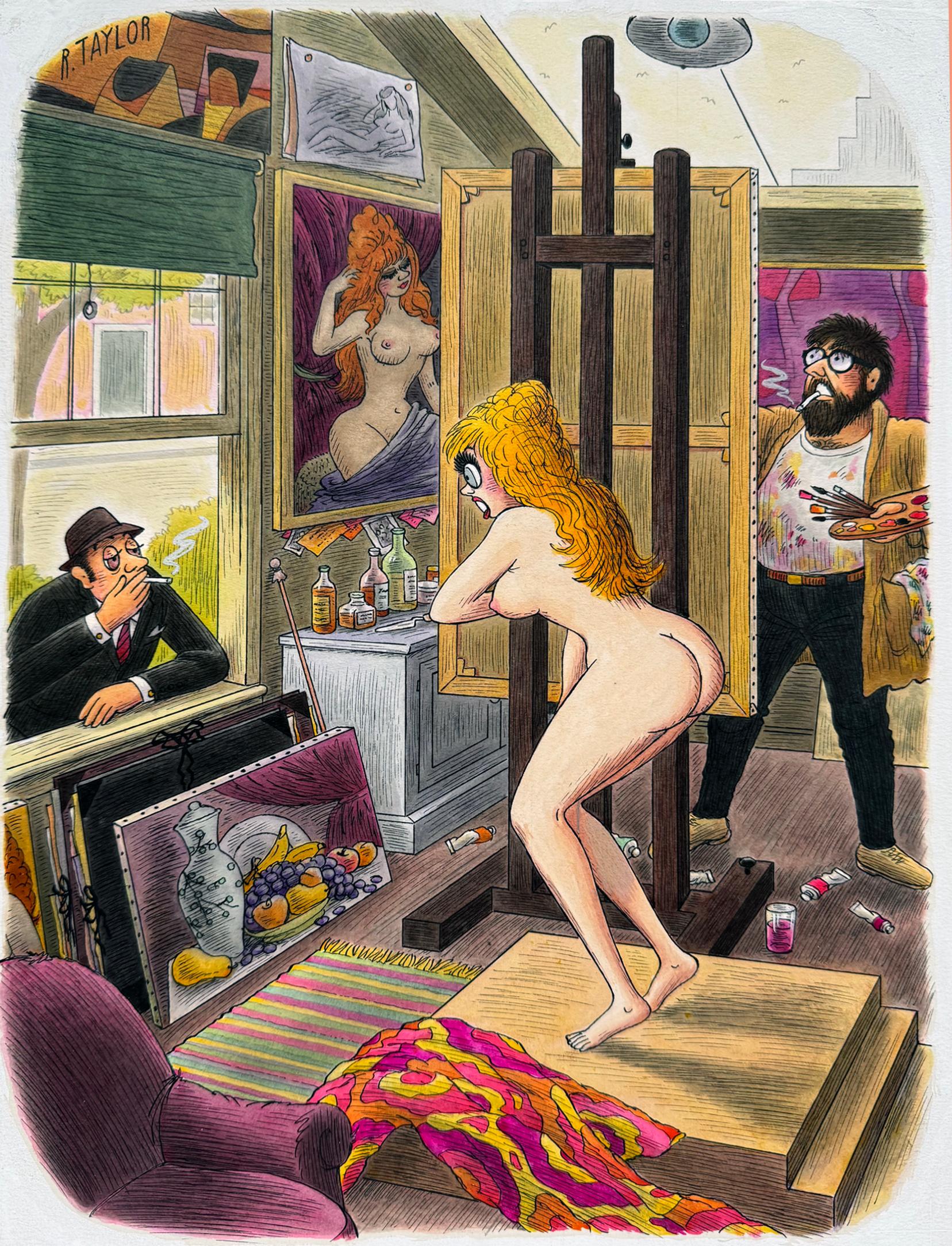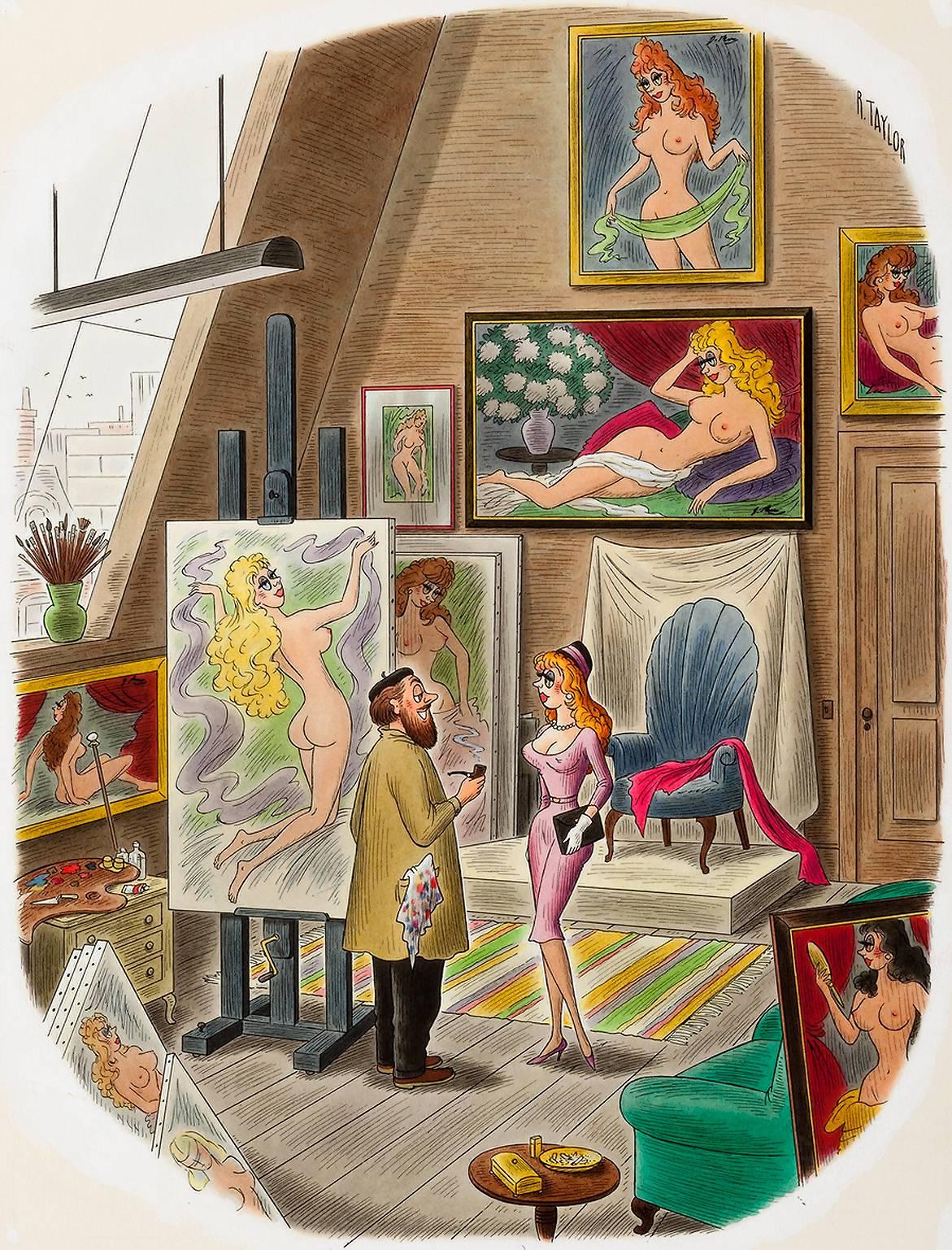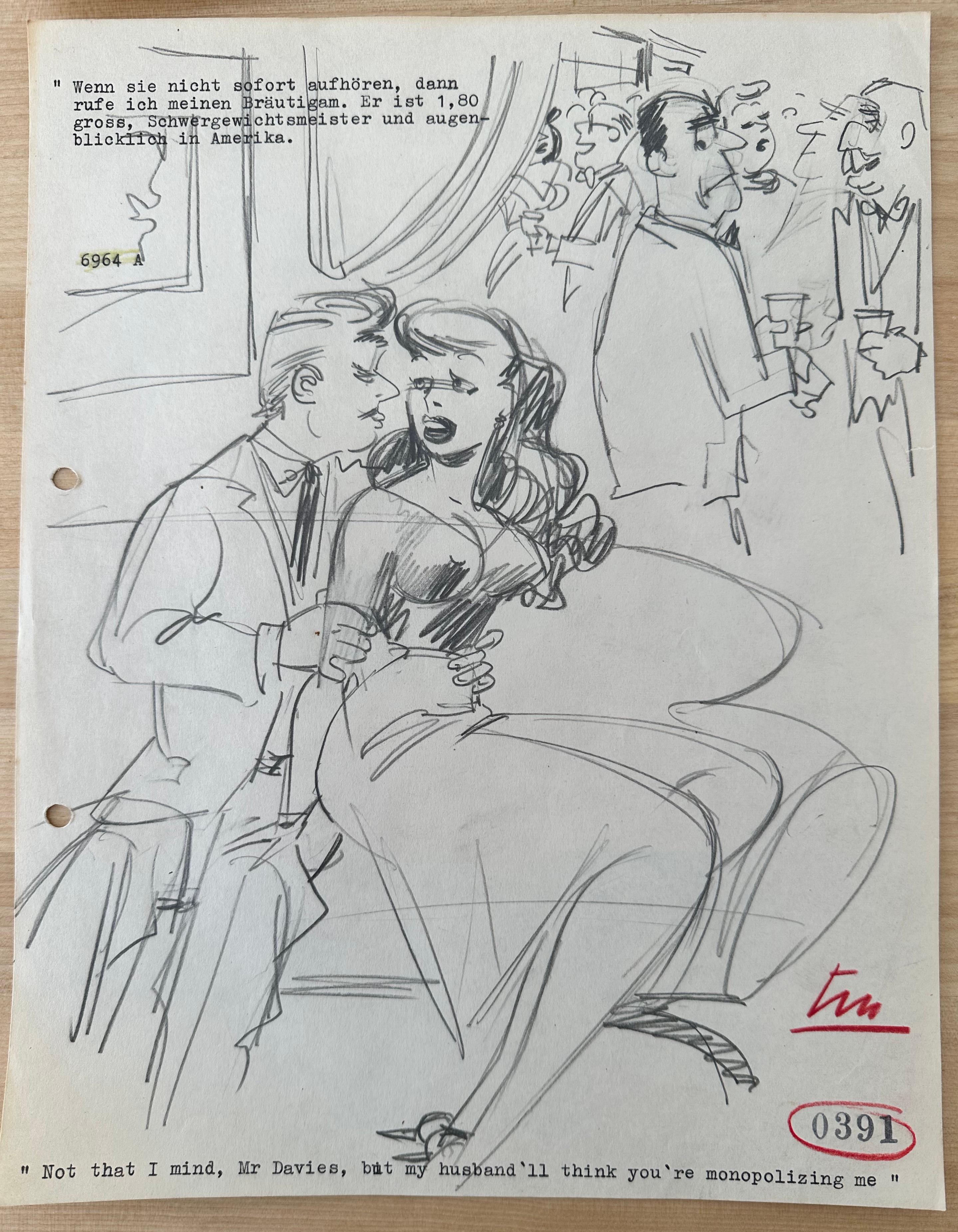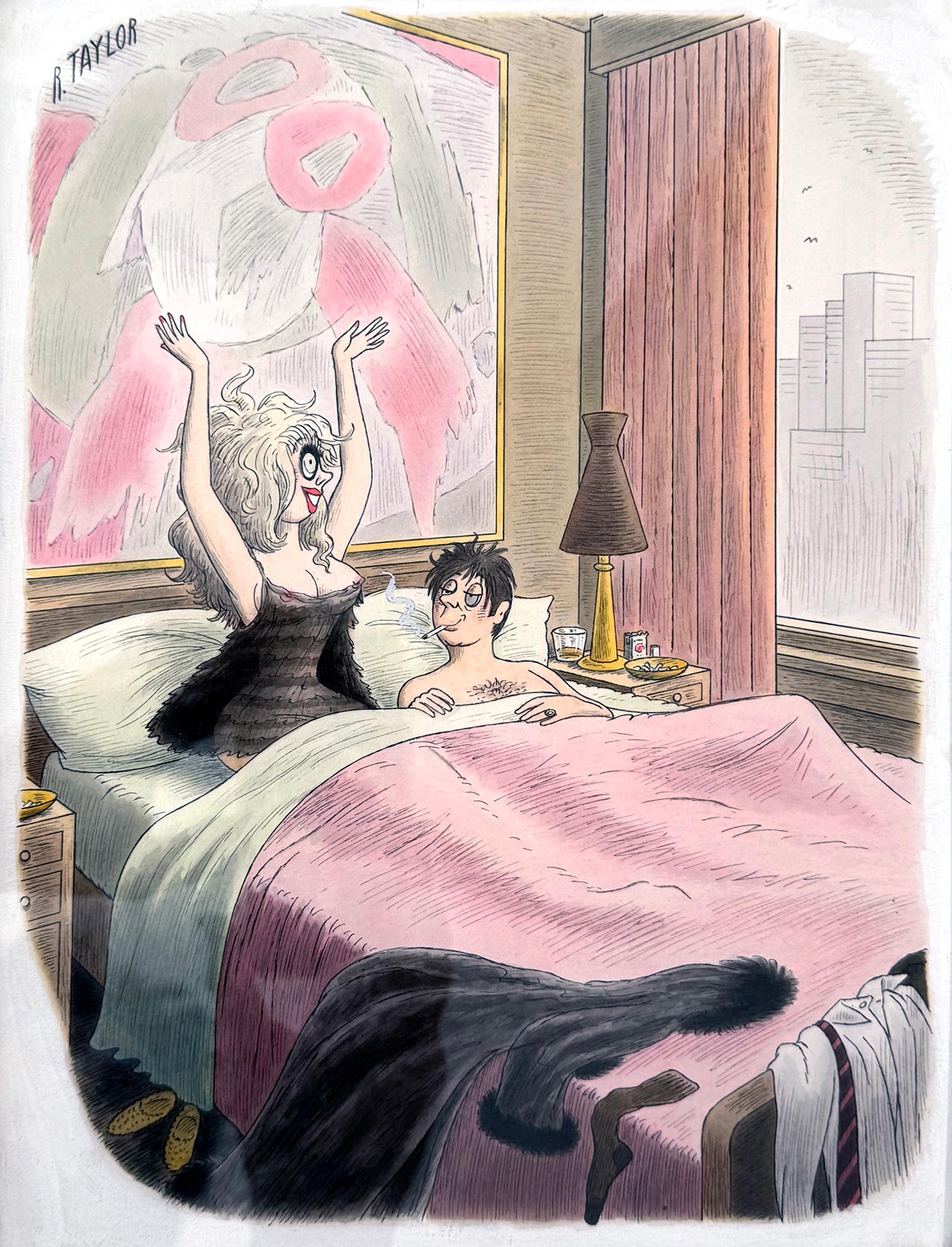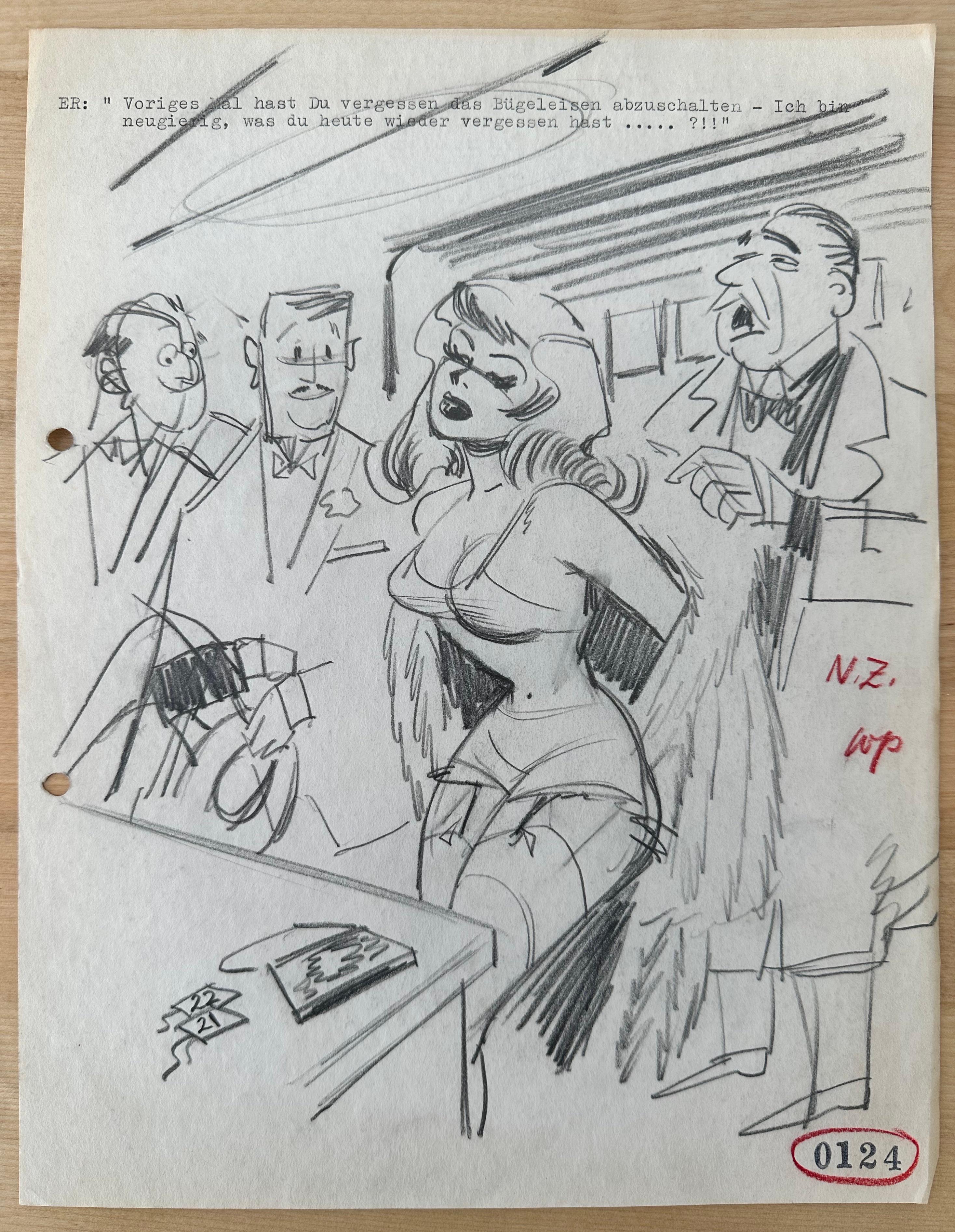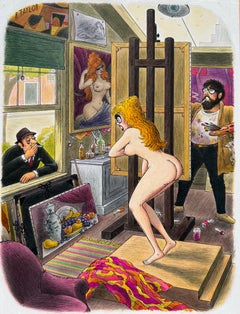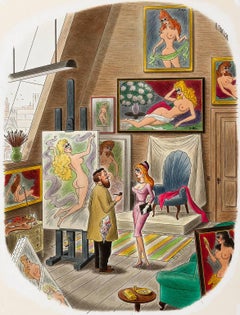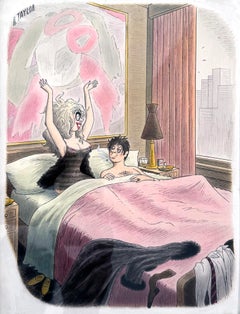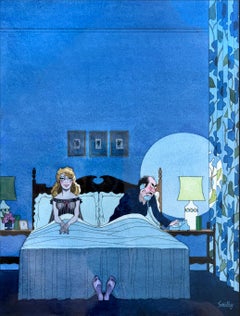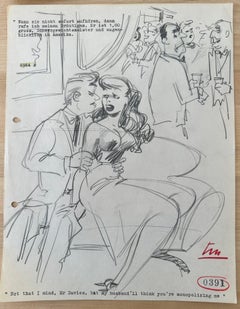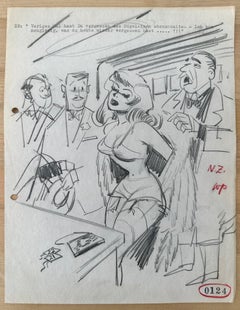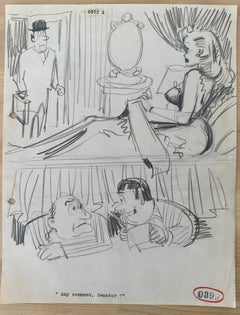Items Similar to Couple Having Sex: That's a Wrap, Playboy cartoon Illustration
Want more images or videos?
Request additional images or videos from the seller
1 of 4
Dink SiegelCouple Having Sex: That's a Wrap, Playboy cartoon Illustration1971
1971
$10,000
£7,595.82
€8,752.96
CA$14,082.48
A$15,612.51
CHF 8,204.98
MX$191,071.49
NOK 102,471.88
SEK 96,180.11
DKK 65,335.39
About the Item
Dink Siegel is one of those rare conceptual Artists who are also called cartoonists, capable of clearly and effectively communicating a complex narrative in a single picture. Besides his storytelling skills, Siegel is a master draftsman with a deep knowledge of human anatomy, who masterfully renders figures in a believable setting. His compositions are brilliantly constructed as his punchy use of color. Perhaps most impressive is that his painting and drawing technique is instantly recognizable as his own. He is an artist with his own style, and that is something not many artists can say.
Dink Siegel (American, 1910-2003)
That's a Wrap, Playboy cartoon, August 1973
Mixed media on board
11.25 x 8.5 in.
Signed lower right
- Creator:Dink Siegel (1910 - 2003, American)
- Creation Year:1971
- Dimensions:Height: 11.75 in (29.85 cm)Width: 8.75 in (22.23 cm)
- Medium:
- Movement & Style:
- Period:
- Condition:
- Gallery Location:Miami, FL
- Reference Number:1stDibs: LU38531849163

About the Seller
5.0
Gold Seller
Premium sellers maintaining a 4.3+ rating and 24-hour response times
Established in 2005
1stDibs seller since 2016
117 sales on 1stDibs
Typical response time: 1 hour
- ShippingRetrieving quote...Shipping from: Miami, FL
- Return Policy
Authenticity Guarantee
In the unlikely event there’s an issue with an item’s authenticity, contact us within 1 year for a full refund. DetailsMoney-Back Guarantee
If your item is not as described, is damaged in transit, or does not arrive, contact us within 7 days for a full refund. Details24-Hour Cancellation
You have a 24-hour grace period in which to reconsider your purchase, with no questions asked.Vetted Professional Sellers
Our world-class sellers must adhere to strict standards for service and quality, maintaining the integrity of our listings.Price-Match Guarantee
If you find that a seller listed the same item for a lower price elsewhere, we’ll match it.Trusted Global Delivery
Our best-in-class carrier network provides specialized shipping options worldwide, including custom delivery.More From This Seller
View AllThe Male Gaze: Literally. Playboy Cartoon
By Richard Taylor
Located in Miami, FL
We hear a lot about the "Female Gaze". It's how women view art and society from the female perspective. However, we rarely hear about the " Male Gaze" .
In this 1969 Playboy cartoon,...
Category
1960s American Realist Nude Drawings and Watercolors
Materials
Ink, Watercolor, Gouache, Illustration Board, Pencil
Playboy cartoon Illustration, "For Posing, My Terms Are a Dollar an Hour, Room
By Richard Taylor
Located in Miami, FL
Put aside Richard Taylor's dry wit. Look at his masterfully rendered figures and brilliantly constructed compositions based on a two-point perspective. Clearly, he is an underrated and overlooked talent in the class of Charles Addams. Above all, Taylor, with his heavely-lidded-eyed figure, has a style of his own. An artist who has an instantly recognized style - unique to him/her is a rarity in today's artworld of derivative artists.
"For Posing, My Terms Are a Dollar an Hour, Room, and Board", Playboy cartoon illustration...
Category
1960s Contemporary Figurative Paintings
Materials
Watercolor
Nude Girl Epiphany Playboy Cartoon - Women's Liberation Moment
By Richard Taylor
Located in Miami, FL
Richard Taylor is one of the great Cartoonists. He is celebrated for his dry sense of humor and skill in depicting people in subtle narratives. His instantly recognizable style is ...
Category
1960s Conceptual Nude Drawings and Watercolors
Materials
Ink, Watercolor, Gouache, Illustration Board, Pencil
Sexy Evening in Bed Phone Call - Playboy Cartoon Humor - Francis Wilford Smith
Located in Miami, FL
Cartoon art is the original Conceptual Art.
Renowned British Illustrator Smilby (Francis Wilford Smith) conceptualizes a Playboy cartoon so good that no caption is needed. The exist...
Category
1970s American Modern Figurative Drawings and Watercolors
Materials
Ink, Watercolor, Illustration Board
Art Lovers and Art Critics Analyzing Obscene Painting. Cartoon
By Richard Taylor
Located in Miami, FL
Cartoonist Richard Taylor was trained in academic art. He frequently comments on abstract art which was the new and radical thing at the time. "Curtis sees so much more in these thi...
Category
1940s Academic Portrait Drawings and Watercolors
Materials
Ink, Board
Nude Girls Dance Playboy cartoon "They Say Every Little Gesture Has Meaning
By Richard Taylor
Located in Miami, FL
"They Say Every Little Gesture Has a Meaning", Playboy cartoon illustration, August 1968
Pen and watercolor on board
12.5 x 9.5 in. (image)
Signed...
Category
1960s American Realist Nude Paintings
Materials
Watercolor, Pen
You May Also Like
Humorous Gentleman's Magazine cartoon
Located in Wilton Manors, FL
Cartoon sketch, ca. 1955. Pencil on paper, sheet measures 8.5 x 11 inches. Unsigned with editor's notations.
From a group of sketches meant to be preliminary drafts for editor appro...
Category
Mid-20th Century Figurative Drawings and Watercolors
Materials
Pencil
$125 Sale Price
50% Off
Humorous Gentleman's Magazine cartoon
Located in Wilton Manors, FL
Cartoon sketch, ca. 1955. Pencil on paper, sheet measures 8.5 x 11 inches. Unsigned with editor's notations.
From a group of sketches meant to be preliminary drafts for editor appro...
Category
Mid-20th Century Figurative Drawings and Watercolors
Materials
Pencil
$125 Sale Price
50% Off
Gawkers, Original Conte Crayon and Watercolor Illustration by Bill Ward
Located in Long Island City, NY
Artist: Bill Ward, American (1919 - 1998)
Title: Gawkers
Year: circa 1981
Medium: Graphite and Watercolor on Paper, signed l.r.
Size: 23 in. x 17 in. (58.42 ...
Category
1980s Post-Modern Figurative Drawings and Watercolors
Materials
Graphite
Humorous Gentleman's Magazine cartoon
Located in Wilton Manors, FL
Cartoon sketch, ca. 1955. Pencil on paper, sheet measures 8.5 x 11 inches. Unsigned with editor's notations.
From a group of sketches meant to be preliminary drafts for editor appro...
Category
Mid-20th Century Figurative Drawings and Watercolors
Materials
Pencil
$125 Sale Price
50% Off
Humorous Gentleman's Magazine cartoon
Located in Wilton Manors, FL
Cartoon sketch, ca. 1955. Pencil on paper, sheet measures 8.5 x 11 inches. Unsigned with editor's notations.
From a group of sketches meant to be preliminary drafts for editor appro...
Category
Mid-20th Century Figurative Drawings and Watercolors
Materials
Pencil
$125 Sale Price
50% Off
Original Ronald Shap figure drawing, signed
Located in Columbus, OH
Original oil pastel and gouache figure painting by celebrated, twentieth-century California landscape painter, Ronald Shap. Vibrant sketch of nude woman with fetish accessories in wa...
Category
1980s Pop Art Nude Drawings and Watercolors
Materials
Oil Pastel, Gouache
